Grouping students in math can be a very complex process. If you take all the factors that are necessary for a group to function…personality, math ability, and ability to work in a group together, then you may find that no perfect combination exists.

Here are some reasons you may decide to group students:
- You may group students because you believe that students can learn from one another.
- You may group students because you believe they will complete more work together.
- You may group students because you believe it will create a positive classroom environment.
Note: In all cases of grouping students, I recommend having an upfront conversation about being respectful. I never wanted a student to express distaste regarding working with someone. Similar to assigning new seats, I would tell students that I didn’t want to hear a single word, smacking of the lips, or eye rolls regarding their group.
Heterogeneous Groups
This type of group represents students with varying abilities. This group will have a mix of your highest students, lowest students, and everyone in between.

Pros of Heterogeneous Grouping
This represents a typical class. This grouping supports peer tutoring. Sometimes students can explain concepts in a way that makes sense to another student better than me, the teacher.
Cons of Heterogeneous Grouping
This type of grouping puts pressure on the highest student to be the de facto leader while those around them might disengage. It is argued by critics to increase the achievement gap.
Homogeneous Groups
This type of group represents students with similar abilities. You could take the most recent data point like an exit ticket and group students based on how they performed. All students who earned a 100 would be in a group together while students who earned a 70 would be in a group together.

Pros of Homogeneous Grouping
In this type of grouping, teachers can provide individualized instruction and vary the activity to engage students where they are at. Meanwhile, ‘the lower group’ can receive more support from the teacher.
Cons of Homogeneous Grouping
From my personal experience with grouping students, I often used heterogeneous grouping to help spread out some of the off task behavior. This made classroom management slightly easier. Being a teacher is always a balance of classroom management and pedagogy.
Random Groups
Random groups are truly random. This can be as random as having students draw from a deck of cards and being grouped accordingly (example: all 4s work together).
Pros of Random Grouping
After reading Building Thinking Classrooms by Peter Liljedahl, I learned that random groups have shown to increase students’ engagement and thinking.
According to the book, groups that were created by the teacher meant “80% of students entered their groups feeling like they were going to be the follower rather than a leader – to be a follower rather than a thinker.”
By creating visibly random groups, students were more willing to collaborate, their enthusiasm for learning math increased, and social barriers were eliminated.
Cons of Random Grouping
According to the book, for random groups to work, you have to regroup them about everyday. That requires moving seats or reassigning groups which can eat up some class time. Personally, the lack of control would make me feel a little bit anxious, but if you are randomizing the groups every single day, then you only have to live with a challenging group for one class period.
If you read the book (which I highly recommend you do), Leljedahl does address many teacher concerns.
Ideas for random grouping
- Students pick out a numbered popsicle stick when they walk into class that corresponds to a seat number
- Students draw a colored tile that assigns them to a grouping of desks
- Students grab a Starburst out of a bag as they walk into class. The color they chose corresponds to a table group.
- My personal favorite – Walk around the room and count off students, “1, 2, 3, 4, 5” and then repeat. Requires zero prep!
Best Practices
Whatever method you use for grouping, and there are benefits to all of them, I recommend these best practices:
- Change up groups frequently
- Set expectations for each group member. Post class norms like “everyone contributes” or “we work together” and then positively narrate when you see groups meet those expectations.
- Hold everyone accountable for work completed together. If students are working on an activity, everyone fills out their own paper to turn in.
- Keep group sizes around 3-4. Larger groups can make it easier for students to disengage.
- Roles like recorder or timer provide structure to a group and can ensure everyone participates. Communicating that your role is not the only thing you do is vital to encourage all students to participate in the thinking part of the activity too.
You can grab our “Group Roles” posters from our Classroom Poster Pack. Included are group roles for:
- Timer
- Leader
- Scribe
- Supply Manager
- Presenter
How do you group your students?
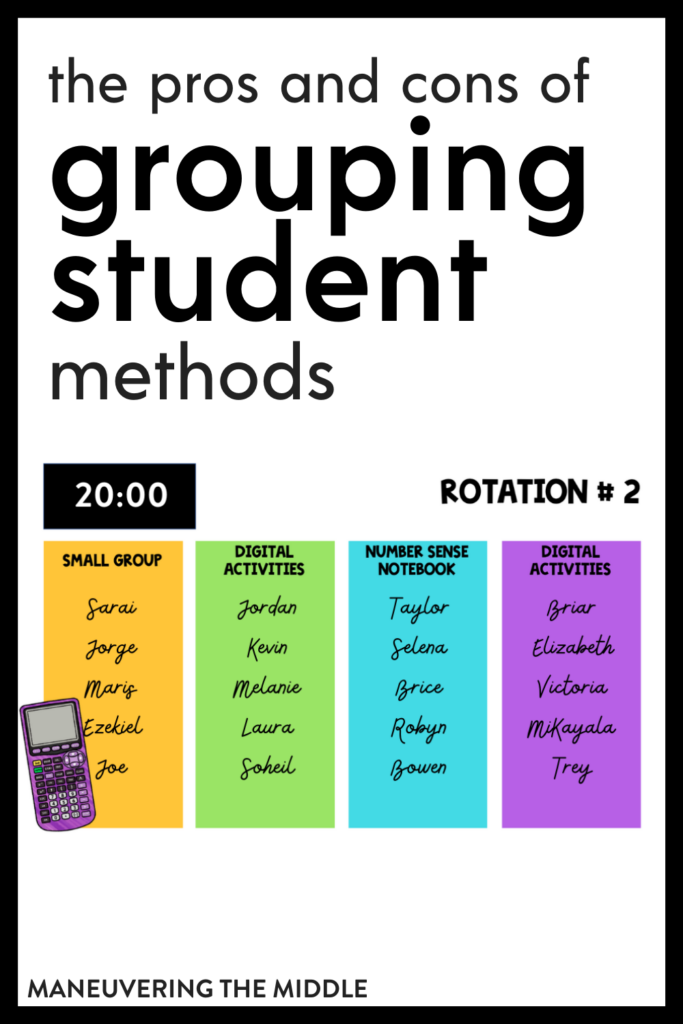
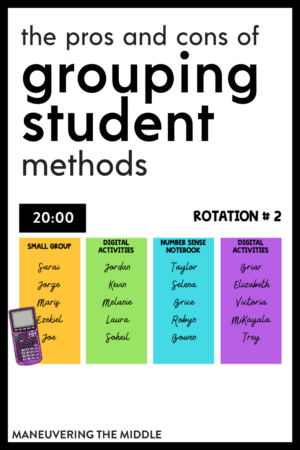

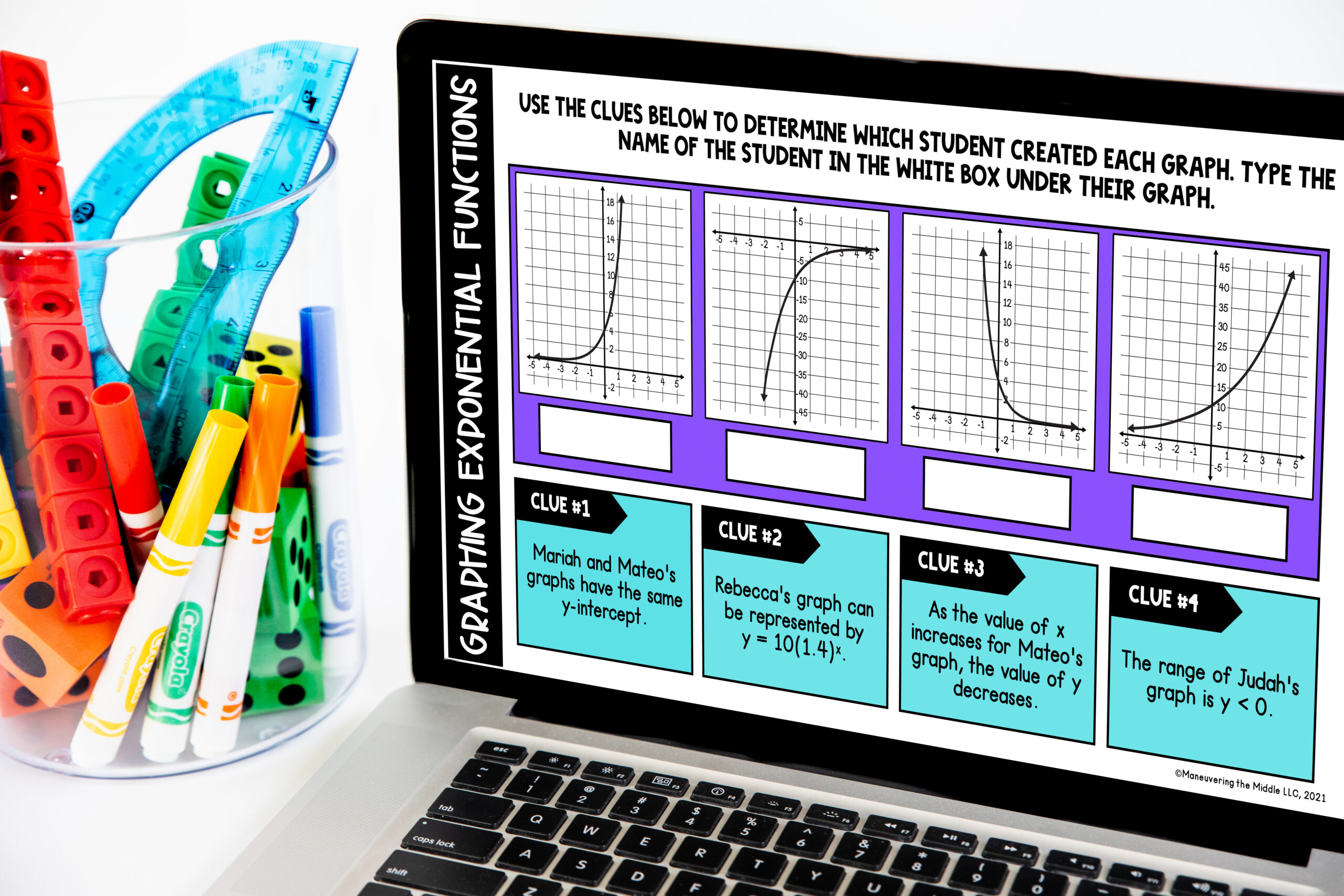

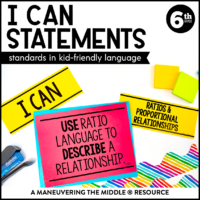
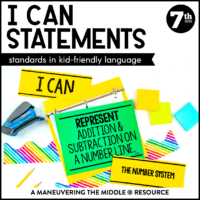
I teach Mechatronics Engineering, and like Math subjects, I’m always putting students into groups. I like small groups for discussions and short research/reflection activities… One trick I use is I have a box with some little tokens inside. I have tokens of 8 different shapes (circle, oval, square, rectangle, triangle, diamond, rectangle, octagon, star) I have also a mix of 8 different colors, and I also have a number on them from 1- 8… Then I can have students pick randomly from the box… but at the last minute I can say “all the shapes pair up” or “all the same number” or “pair by color”. I typically don’t overthink it, but sometimes I can notice that a student I would like paired with another has the same color or shape, or number, and I can on the fly pick how I want them paired, but from the student perspective, it still feels random. Also, it keeps everyone on their toes and they can figure out how I’m going to group them.